Commitment to player development at the heart of Utah Jazz's rapid rise

There has been nothing but crickets from the Utah Jazz thus far through free agency. Utah could have pressed the fast-forward button on its current rebuild after a surprising 38-win season under rookie head coach Quinn Snyder. The Jazz had the opportunity to clear near-max salary cap space to chase one the NBA’s premier free agents this summer. Instead, Utah has opted to stay patient. Patience has been a virtue for the franchise of late.
Utah’s front office is bullish, to say the least, on their young core of Gordon Hayward, Rudy Gobert and Derrick Favors. David Fredman, who is entering his 42nd season in the NBA, said as much. The Jazz director of pro player personnel moved with the Jazz from New Orleans to Utah in 1974, and spent 15 years as an assistant to Jerry Sloan.
“I’ve seen about all the regimes [in franchise history] and I will say that I’ve seen nothing as exciting as what we’re doing now,” says Fredman. “It’s certainly the most excitement we’ve had since the run to the Finals in ’97 and ‘98.”
- MORE NBA: Top available free agents | Grading signings | Tracker
The front office’s optimism is warranted. With the Clippers and Blazers expected to step back next season, the Jazz could seemingly compete for a playoff spot right here, right now.
Nobody around the NBA expected this rapid transformation only two years ago, following a dreadful 2013-14 campaign that tallied just 25 wins and culminated in head coach Tyrone Corbin’s termination. Utah higher-ups credit the incredible turnaround to one main factor: the Jazz’s hyper-attention to player development under Snyder with general manager Dennis Lindsey’s heavy influence. The return of the Utah Jazz Summer League on July 6 is merely the latest example.
Lindsey arrived in Salt Lake City with a vision molded by 18 years inside the Houston Rockets and San Antonio Spurs organizations. As the Spurs’ assistant GM from 2007-12, Lindsey watched Gregg Popovich and his staff transform miscast youngsters like Danny Green and Gary Neal from D-League prospects to championship-rotation players. He also recognized the importance of San Antonio’s hybrid relationship with the then-Austin Toros.
Synder’s first head-coaching job came on the Toros’ bench from 2007-10, playing an integral role within San Antonio’s development system. The staff in Utah is littered with D-League alums; assistant coaches Brad Jones and Alex Jenson have both been head coaches in the D-League as well.
LaMarcus Aldridge joining Spurs after marveling from a distance for years
Together, Jazz leadership has meticulously approached player development. After Utah paid roughly $300,000 for a hybrid relationship with the Idaho Stampede last season, according to a source, it’s no surprise the Jazz went all in and purchased the D-League franchise in March. “We think that’s the way of the future,” Fredman says.
Utah’s relationship with the Stampede allowed the Jazz to call up a staggering seven D-Leaguers during the 2013-14 campaign. Four of which—Elijah Millsap, Bryce Cotton, Chris Johnson and Jack Cooley—all inked non-guaranteed, long term contracts with the team.
Cooley may be the modern model of a Jazz player. At 6’9", 246 pounds, the forward has worked tirelessly from his days as a plodding center at Notre Dame—"His first two years, he would almost shed tears the nights before our conditioning drills," Notre Dame coach Mike Brey says—to morph into a prototypical stretch-four in today’s NBA. Agile yet burly, Cooley can pick-and-roll and dive hard to the rim. He’s also capable of stretching the floor with a dangerous outside jumper. Cooley says he converted 70% of is uncontested three-point attempts during spring offseason workouts at the Jazz practice facility.
Utah’s key has been taking an individualized approach to player development. During Cooley’s six weeks with the Jazz this spring, it was the first time a coach literally had a tailor-made workout regimen with Cooley’s name on it. “I feel like a lot of teams out there fall into the trap of ‘All the 4s do this drill, all the 5s do this drill,’” Cooley says. “No two players are the same.”
The Jazz repeatedly drilled Cooley in varying pick-and-roll situations with Jenson and Antonio Lang. He also trained under the watchful eye of Stampede head coach Dean Cooper. The Jazz emphasized Cooley’s explosion off of screens, and Cooley workshopped a floater the Jazz feel confident he can unleash against quality NBA defenders in playmaking situations following a pick-and-pop.
Utah’s coaches tinkered with Cooley’s shooting mechanics as well. The big man spent hours with the Jazz’s staff, shifting the ball further off his palm and into the ideal launch pad of his finger tips. The Jazz filmed every player workout and sent each individual home with a highlight tape to emulate on his own before Summer League minicamp began. The overall strategy has Lindsey and Snyder hopeful Cooley, Cotton and Millsap can improve the way Danny Green and Gary Neal did for the Spurs.
“We’re very impressed with Jack’s growth,” Fredman says. “There’s very little difference between the last few spots in the NBA and many of the players in the D-League. It’s often just about right place, right time.”
The final segment of Utah’s offseason player workouts saw the Jazz send every player under contract to the P3 facilities in Santa Barbara. “We were one of the first NBA teams to start using P3,” Fredman says.
Grade the deal: Mavs dodge disaster, lure DeAndre Jordan away from Clips
The Jazz bring their entire roster to Santa Barbara several times a season—a routine for the last six or seven seasons—and will do so again in September prior to training camp. Utah’s strength and conditioning coach Mark McCowen has developed a relationship with P3’s Dr. Marcus Elliot. The players are examined and tested by the P3 staff in the morning and the Jazz coaching staff runs them through basketball activities in the afternoon.
This spring, Cooley learned he needed to strengthen his hips to better withstand the pounding he absorbs against 7-foot behemoths in the paint. Utah credits their 2014 spring stint at P3 with jumpstarting Rudy Gobert’s training to add the muscle and strength necessary for his breakout season in 2014-15. “It’s gotten very scientific,” Fredman says. “I guess there’s basically analytics to the physical conditioning of NBA players these days also.”
Utah has a near-flawless track record under Snyder and Lidnsey, who is now three years into his tenure. Purchasing the No. 27 selection from the Denver Nuggets in 2013 to swipe Gobert has proved an absolute coup. The Jazz are extremely pleased with the defensive potential Dante Exum flashed towards the conclusion of his rookie season, and they’re very intrigued by how Trey Lyles’s crafty skillset can blend with Gobert and Favors’s power and athleticism in the frontcourt. Don’t forget about their promising D-League investment.
All of the above explain why the Jazz have been silent during free agency. “We’re very comfortable with the players we have right now, getting our young players better and seeing what we have before we venture into the trade market or free agent market,” Fredman says. “That’s something that has to do with our reputation as a work program and a developmental staff.” Like the majority of NBA teams, Utah will have the chance to splurge in free agency next season, and they will enter the summer with even more knowledge about the development of Snyder's young roster.
Overall, the Jazz seem primed for a crescendo that wasn’t expected nearly this early.
Biggest NBA draft busts of all-time
Biggest NBA Draft Busts Of All Time
Anthony Bennett, Cavaliers | No. 1 pick, 2013
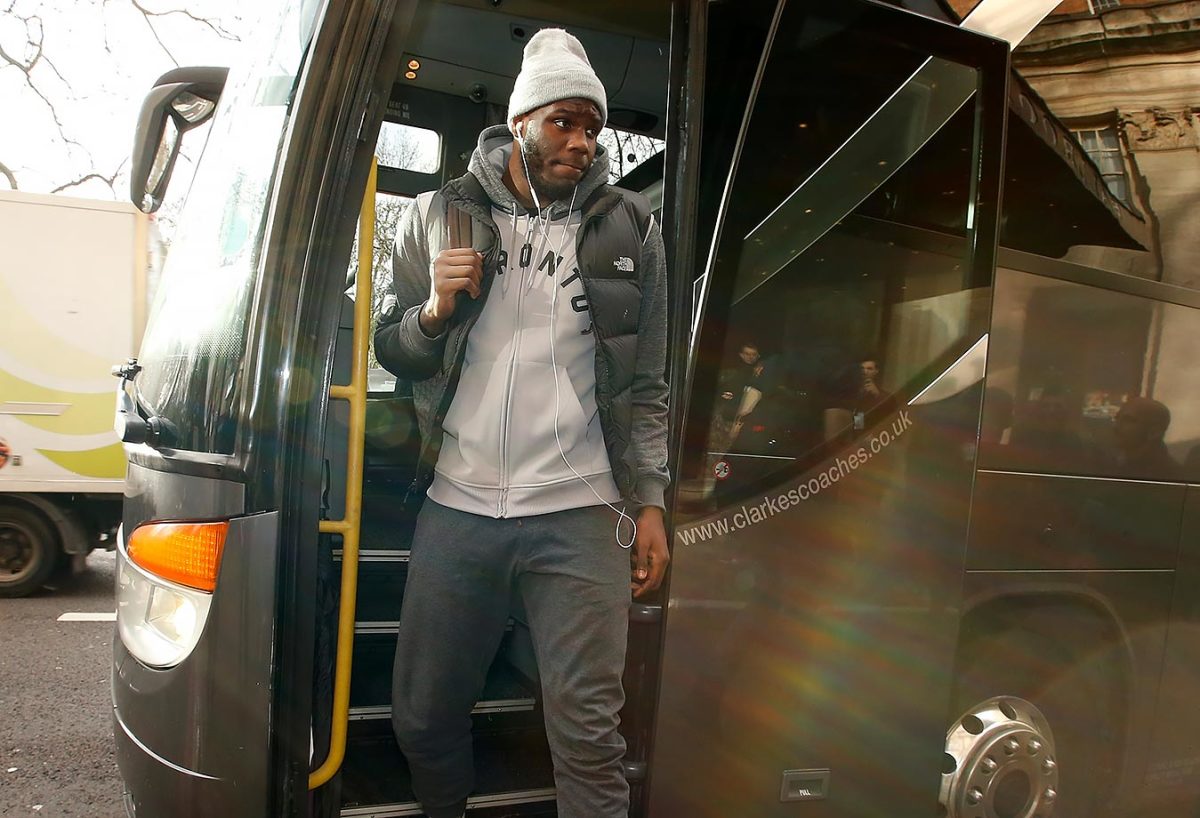
After burning out in both Cleveland and Minnesota in just two years, Bennett hardly logged any minutes in Toronto when the Raptors waived him on Feb. 29, 2016. The No. 1 overall pick, who was recently dropped by the Nets, owns averages of 4.4 points and 3.1 rebounds in just 12.6 minutes per game.
Hasheem Thabeet, Grizzlies | No. 2 pick, 2009
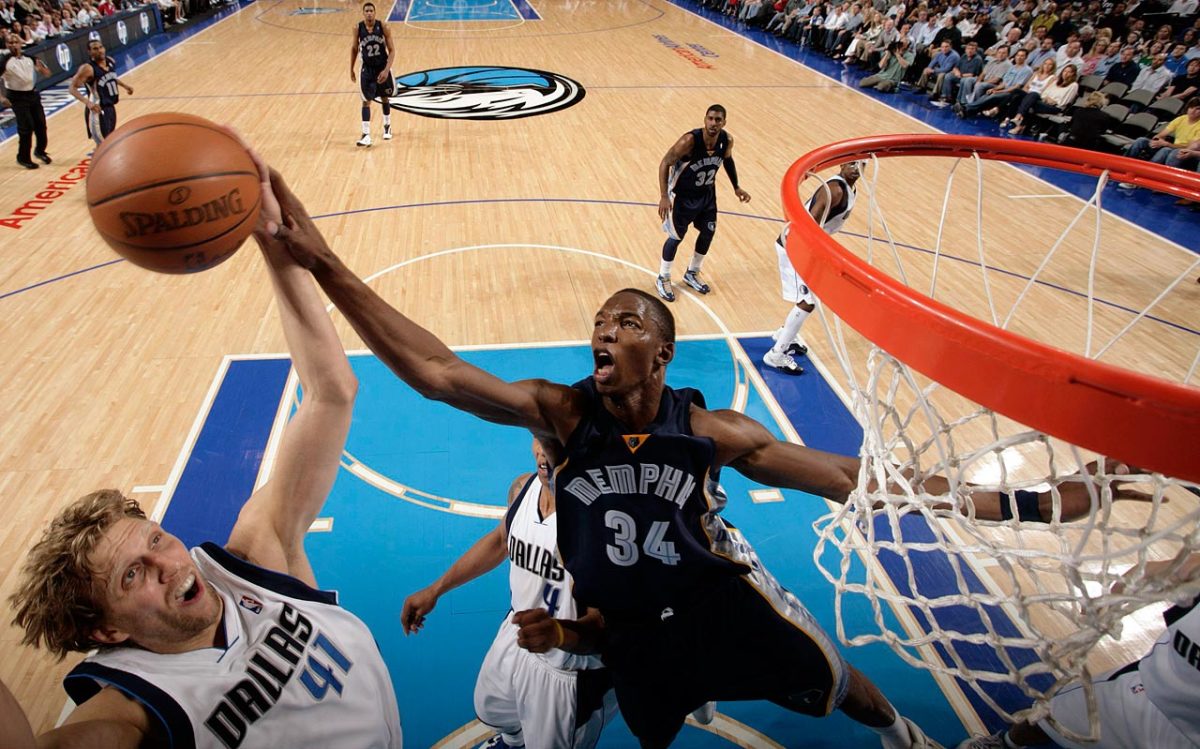
Thabeet has already been passed from Memphis to Houston to Portland to Oklahoma City. The former UConn center was always thought to be a long-term project, but he's yet to develop into a solid NBA center. He has career averages of 2.2 points and 2.7 rebounds in 10.5 minutes.
Joe Alexander, Bucks | No. 8 pick, 2008
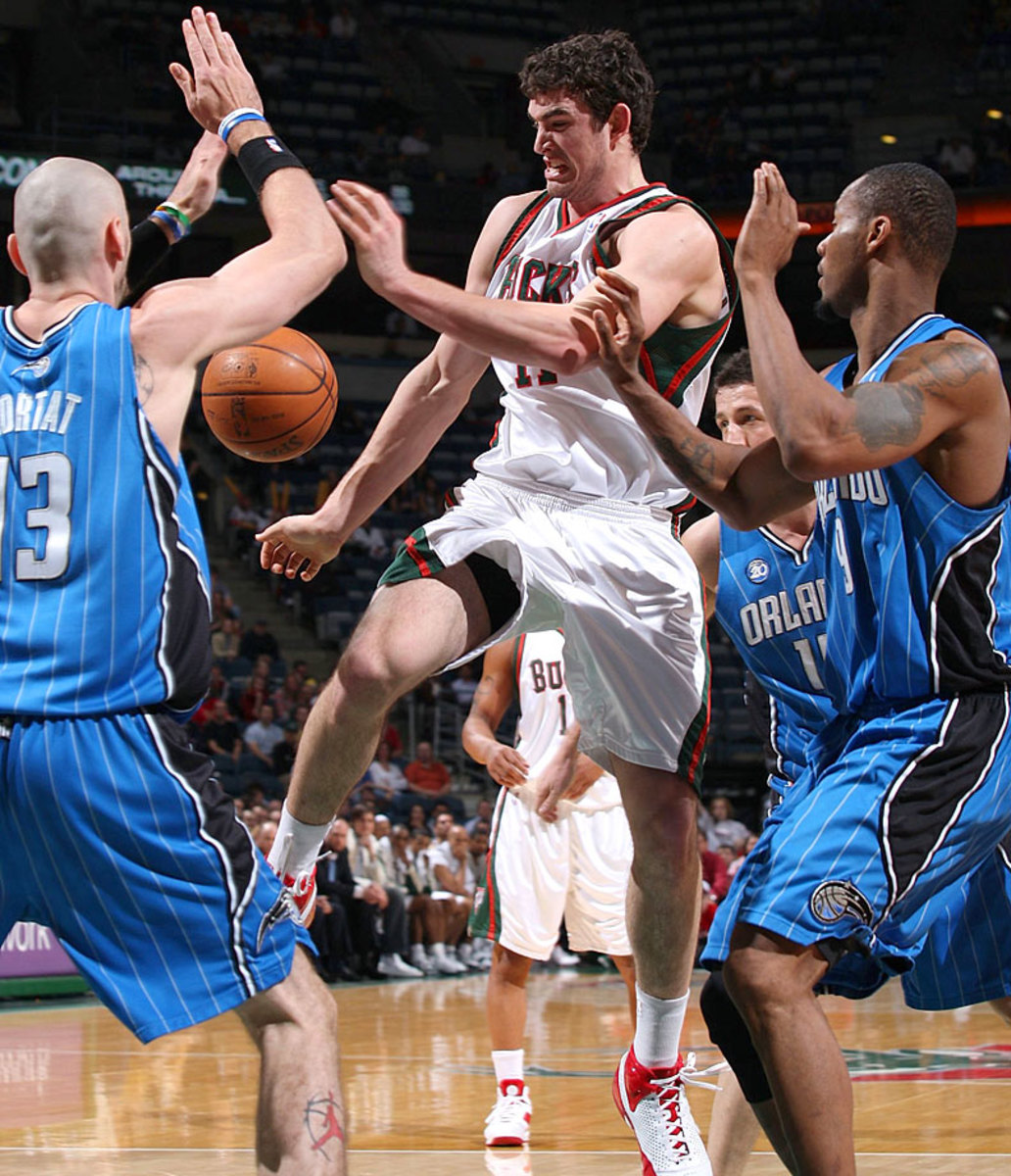
Alexander hasn't played in the NBA since 2010 (he was in Warriors camp in 2013) after averaging 4.2 points in 67 games. Ryan Anderson, Serge Ibaka and Nicolas Batum were among the fellow forwards who were taken after Alexander in the first round.
Greg Oden, Trail Blazers | No. 1 pick, 2007
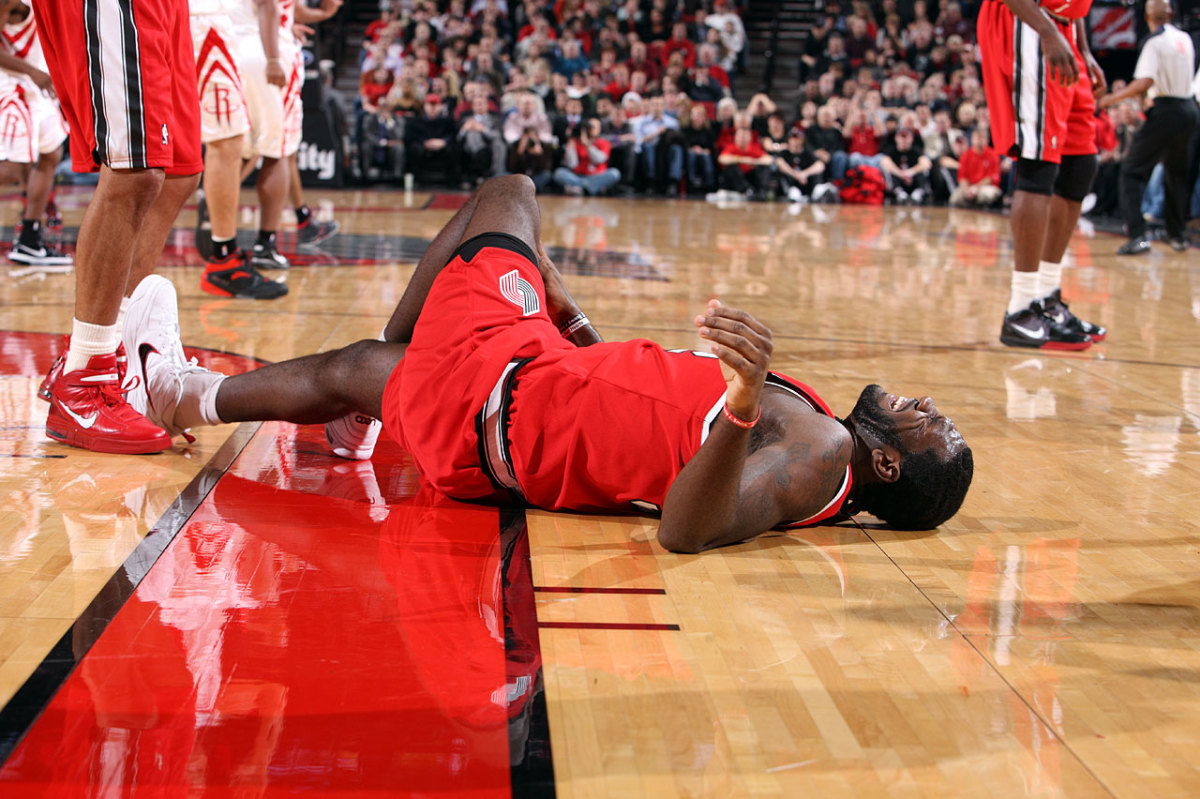
"I know I'm one of the biggest busts in NBA history and I know that it'll only get worse as Kevin Durant continues doing big things ... It's frustrating that my body can't do what my mind wants it to do sometimes. But worrying or complaining about it isn't going to fix anything," said Oden. After being released by the Blazers in March 2012, Oden spent the entire 2012-13 season rehabilitating from multiple knee surgeries. He last played, sparingly, with the Heat in 2014.
Adam Morrison, Bobcats | No. 3 pick, 2006
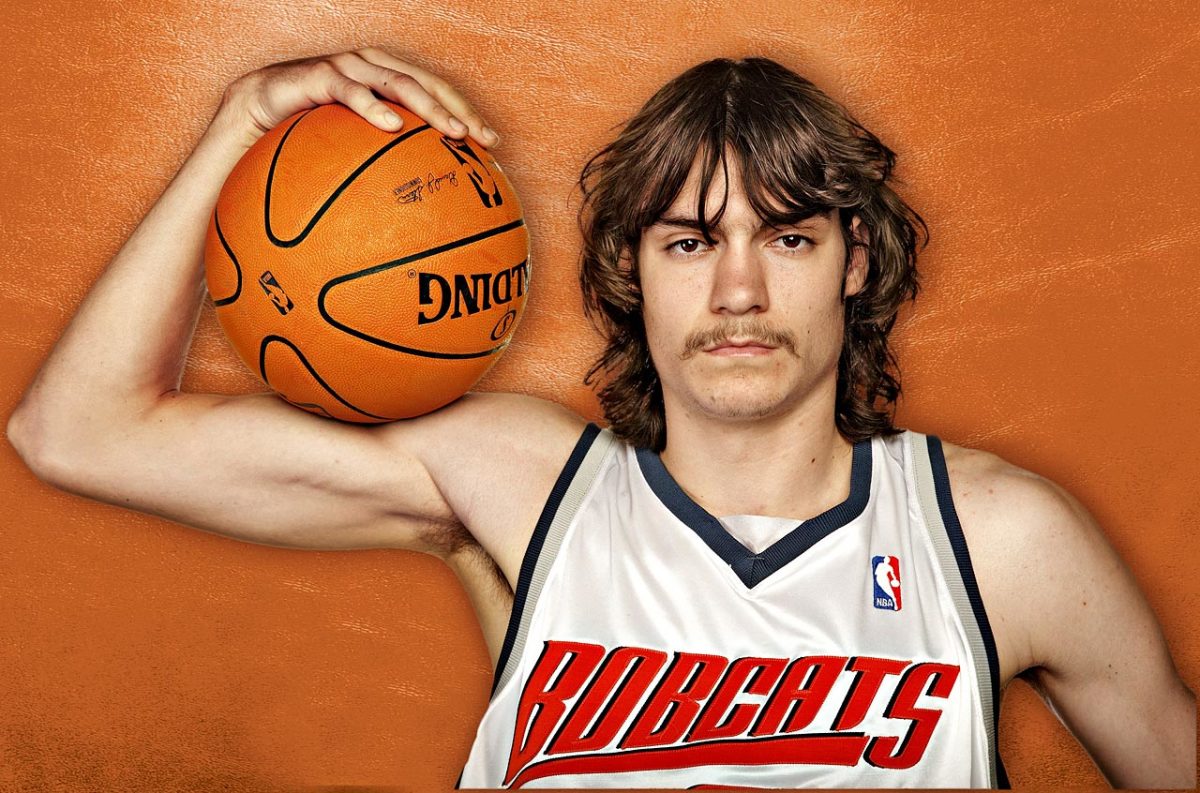
Five years after missing on Kwame Brown, Michael Jordan fared no better with Morrison. The former Gonzaga star averaged 11.8 points as a rookie but shot only 37.6 percent. He missed the next season with a knee injury, was traded to the Lakers in 2009 and quietly fell out of the league in 2010.
Fran Vazquez, Magic | No. 11 pick, 2005
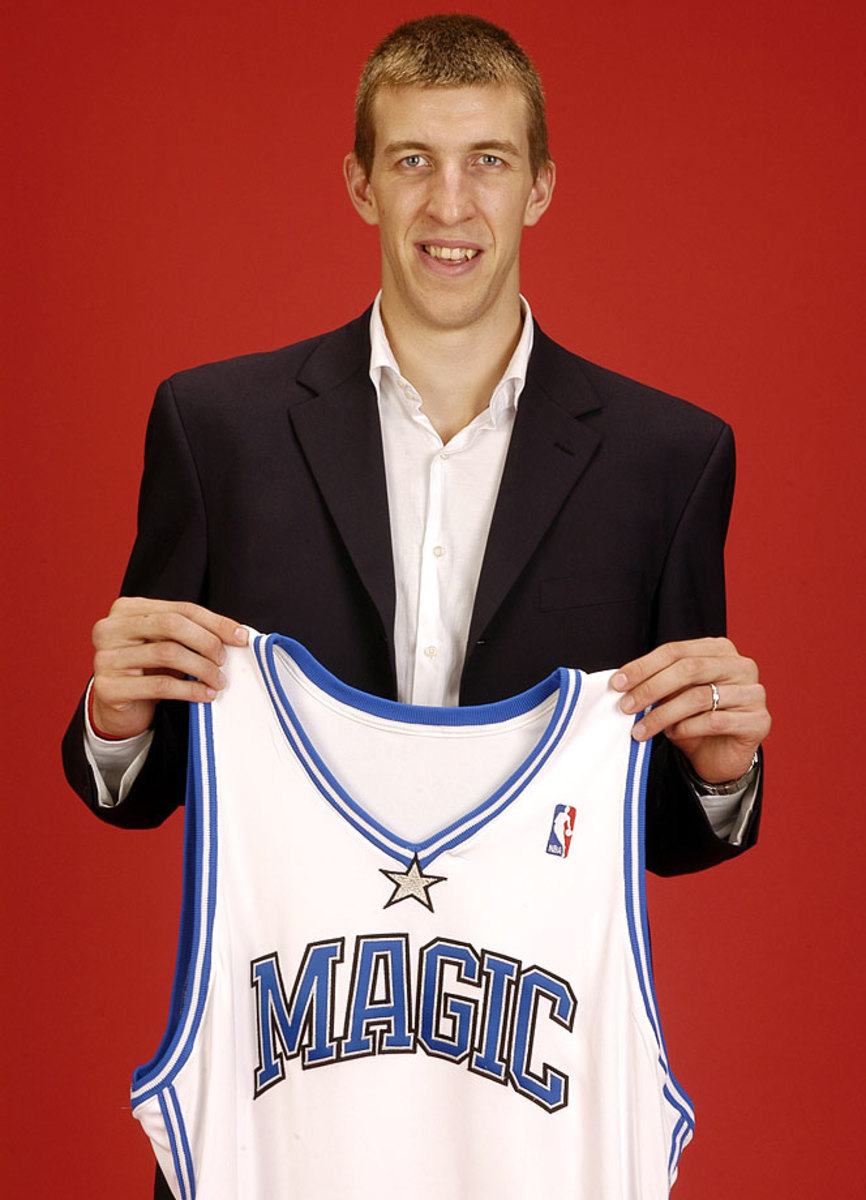
This isn't about the Spanish big man's NBA body of work — after all, there is none. It's about the fact that Orlando used a valuable lottery pick on a player who hasn't even suited up for them. Vazquez is now 31 with over a decade under his belt in the Spanish league.
Rafael Araujo, Raptors | No. 8 pick, 2004
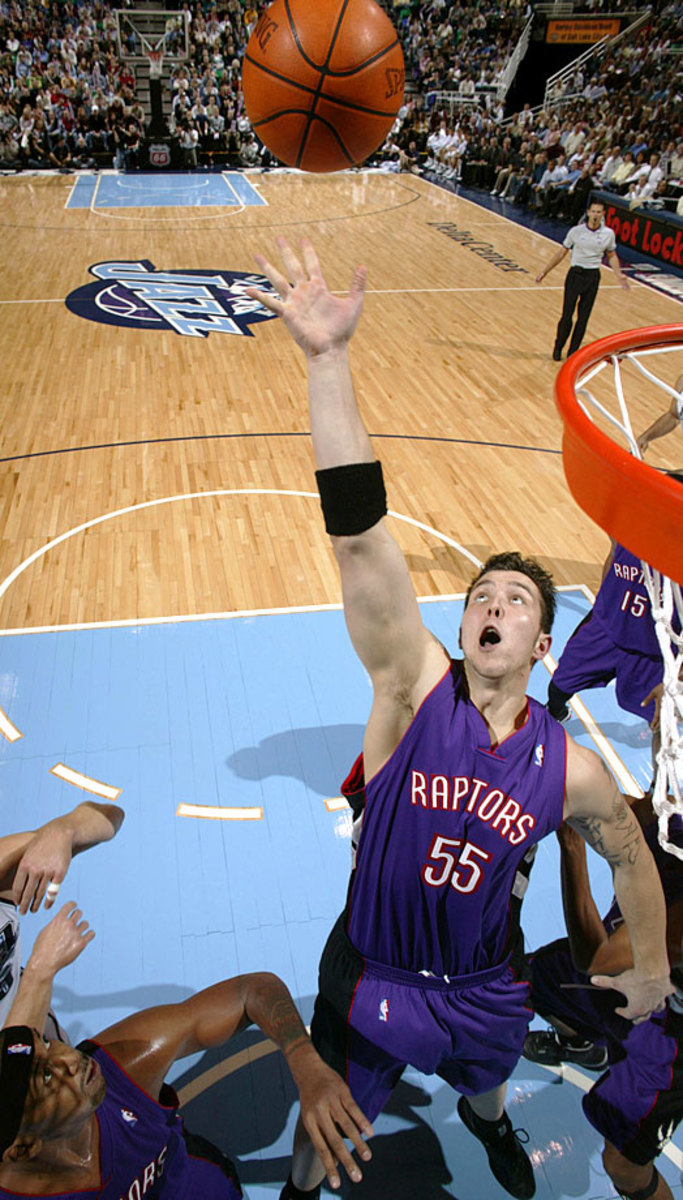
He went about 10 spots higher than was expected, and about 25 spots higher than was deserved. The 6-11 center from BYU was a three-year washout in the NBA.
Darko Milicic, Pistons | No. 2 pick, 2003
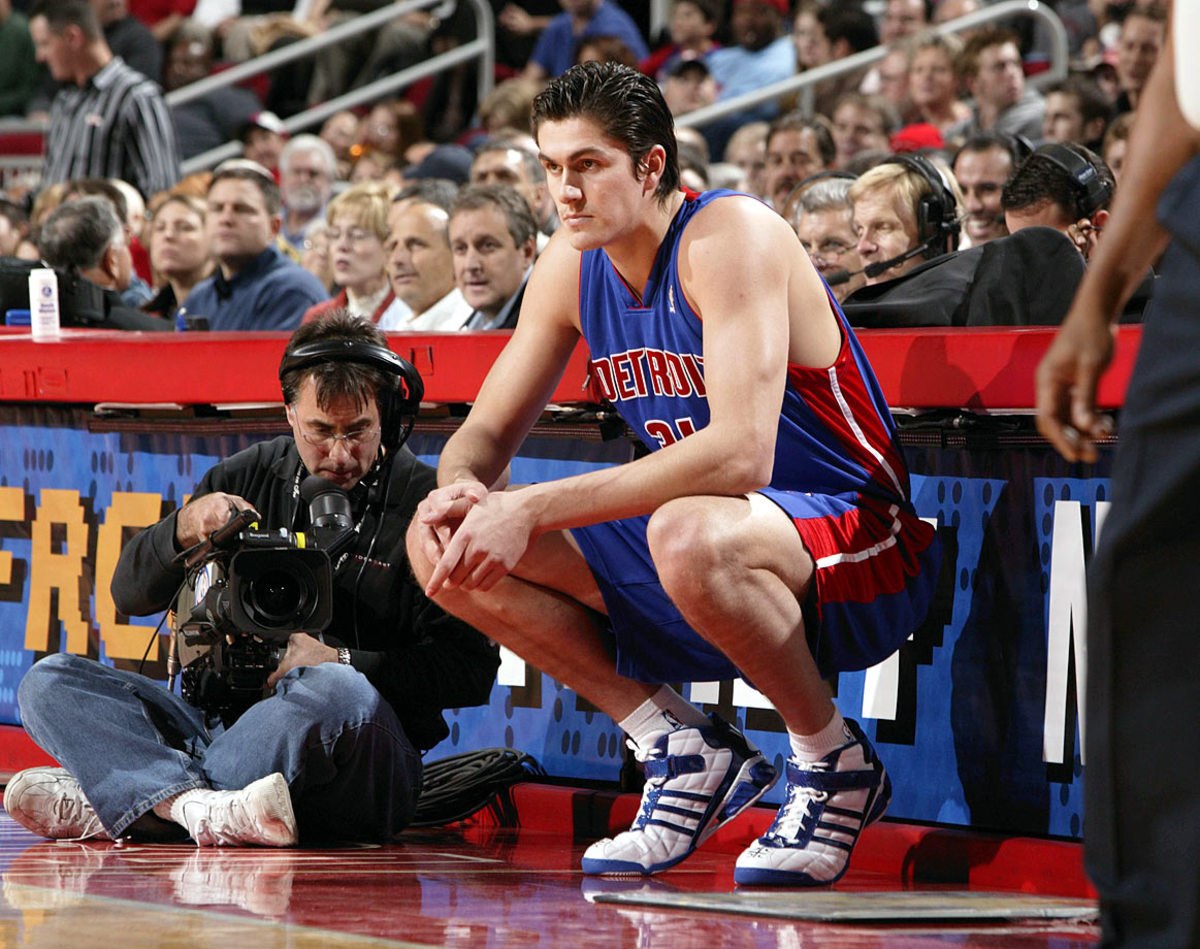
LeBron James, Milicic, Carmelo Anthony, Chris Bosh and Dwyane Wade — which top five pick from 2003 doesn't belong? In fairness, the 28-year-old Milicic showed flashes of strong play. But overall, in 10 seasons Milicic averaged 6.0 points and 4.2 rebounds while playing for six teams; he did not play in the NBA in 2013-14. Joe Dumars and the Pistons whiffed on this one.
Nikoloz Tskitishvili, Nuggets | No. 5 pick, 2002
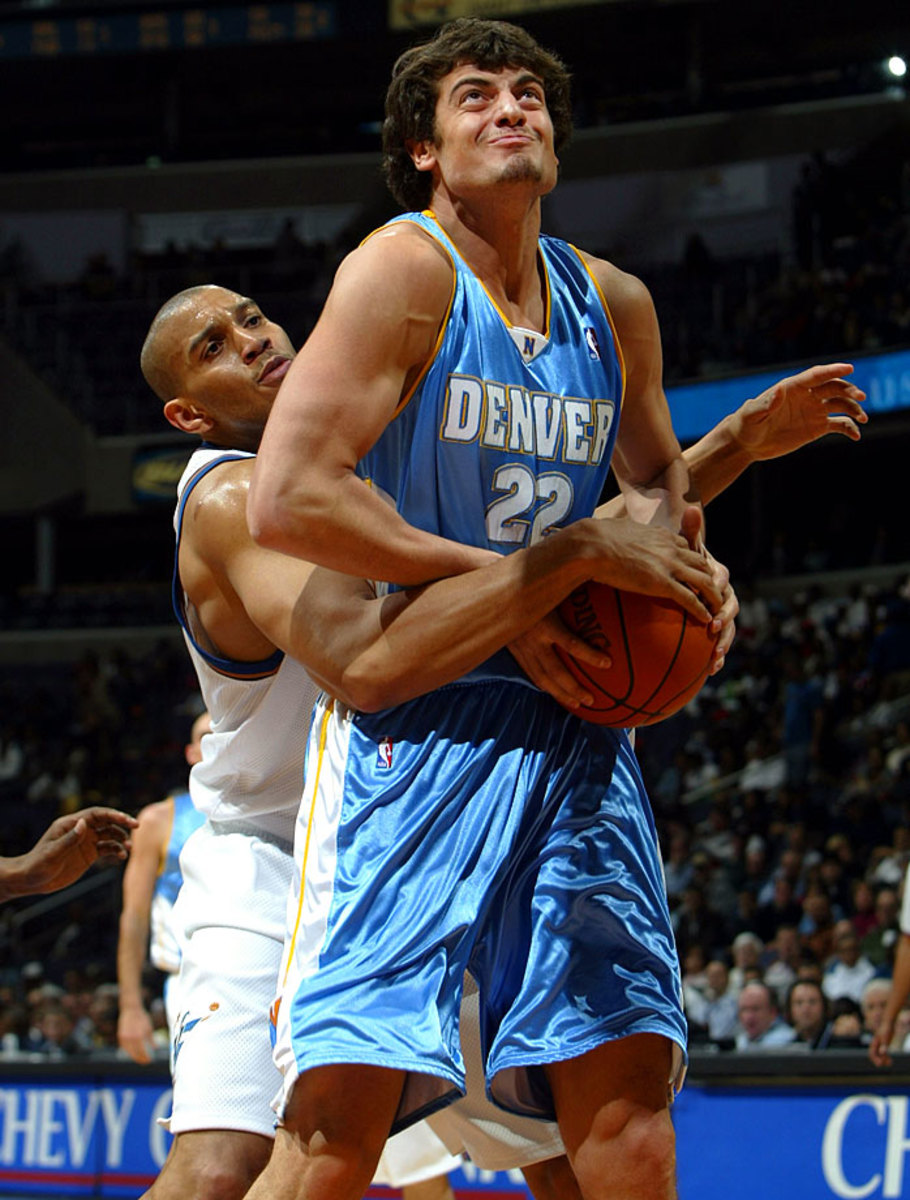
Skita created a buzz with his predraft workouts, and that was that. Four teams discarded him in four seasons. Then-GM Kiki Vandeweghe and the Nuggets did better with the other 19-year-old they acquired two picks later: Nene.
Kwame Brown, Wizards | No. 1 pick, 2001
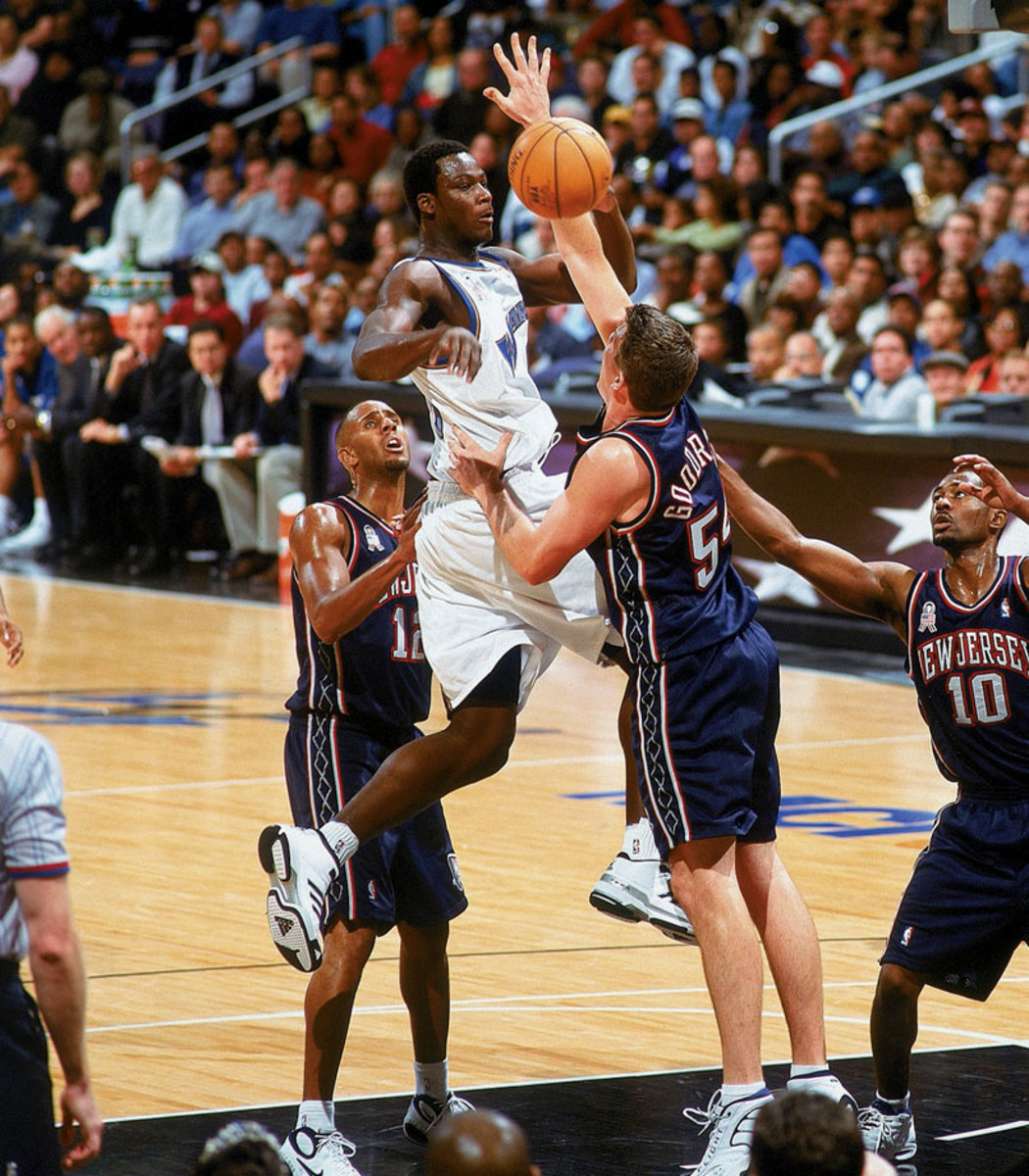
Michael Jordan's handpicked choice played for seven teams in 12 seasons and sports career averages of 6.6 points and 5.5 rebounds. Brown, however, did experience something of a rebirth after reuniting with Jordan in Charlotte in 2010-11, when the 6-11 center averaged 9.4 points and 7.0 rebounds. Those were his best numbers since 2006-07. He was hurt for most of 2011-12 after signing with Golden State and played limited minutes with Philadelphia in 2012-13 before being waived in November 2013.
2000 first round
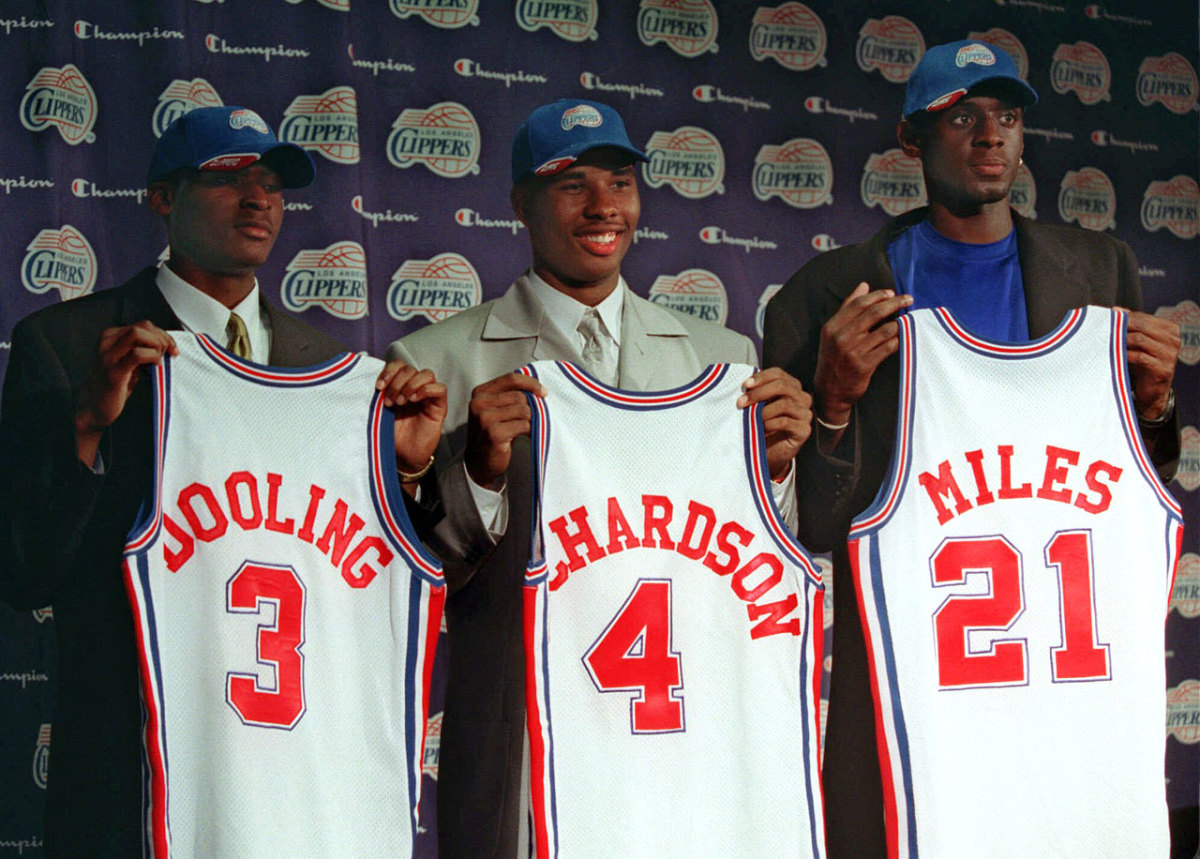
Most of the GMs in '00 got their picks right; this was just a bad group of players. Here was the top half of the first round: Kenyon Martin, Stromile Swift, Darius Miles, Marcus Fizer, Mike Miller, DerMarr Johnson, Chris Mihm, Jamal Crawford, Joel Przybilla, Keyon Dooling, Jerome Moiso, Etan Thomas, Courtney Alexander, Mateen Cleaves and Jason Collier. Particularly unfortunate for the Clippers, who wound up with three of the top 18 picks.
Jonathan Bender, Pacers (via Raptors) | No. 5 pick, 1999
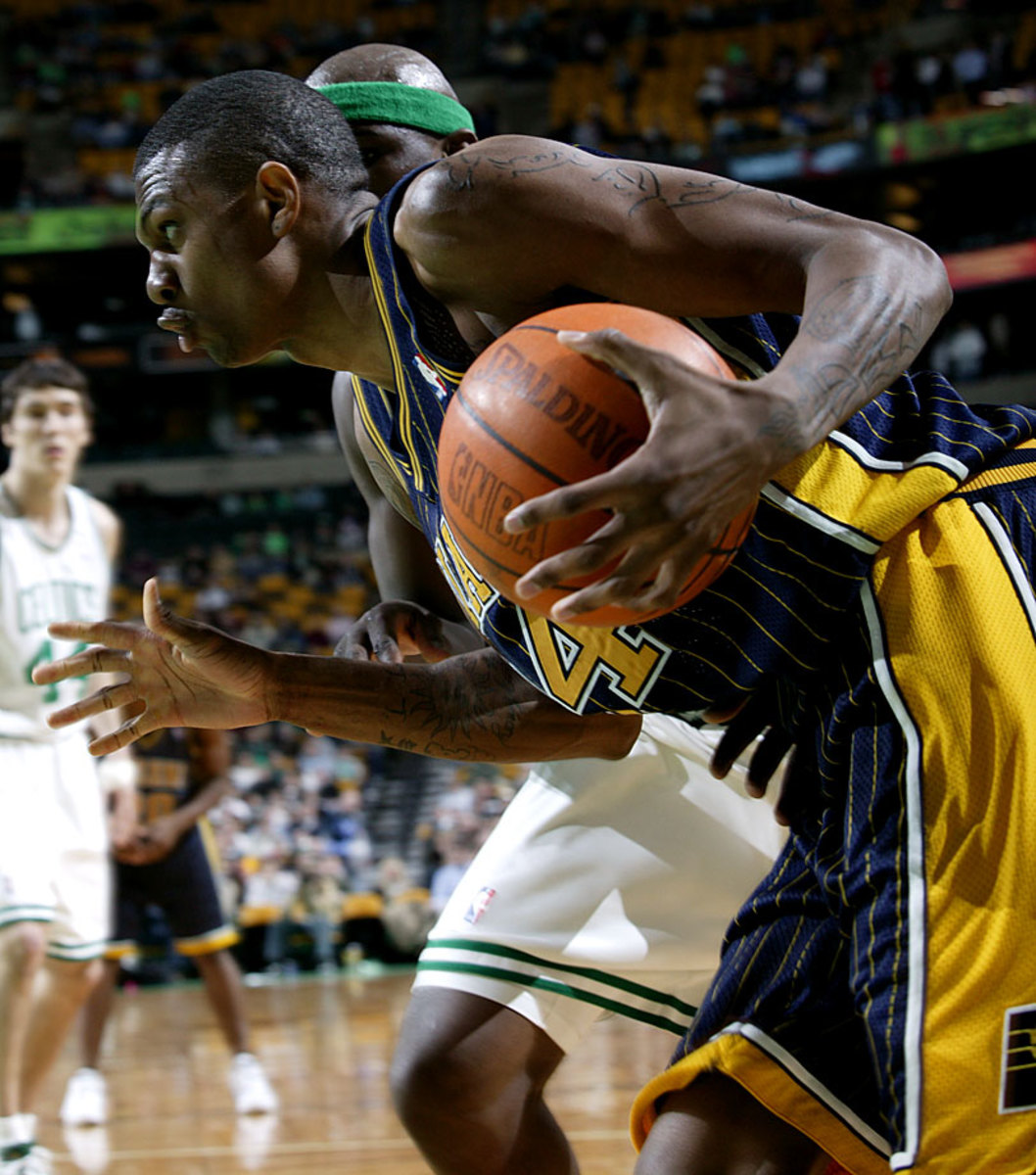
Indiana acquired the draft rights to the preps-to-pros, Kevin-Garnett look-alike for solid big man Antonio Davis. Bender showed tantalizing flashes of his potential but never put it together before cutting short his career because of knee injuries in February 2006. Bender had a 25-game comeback with the Knicks in 2009-2010.
Michael Olowokandi, Clippers | No. 1 pick, 1998
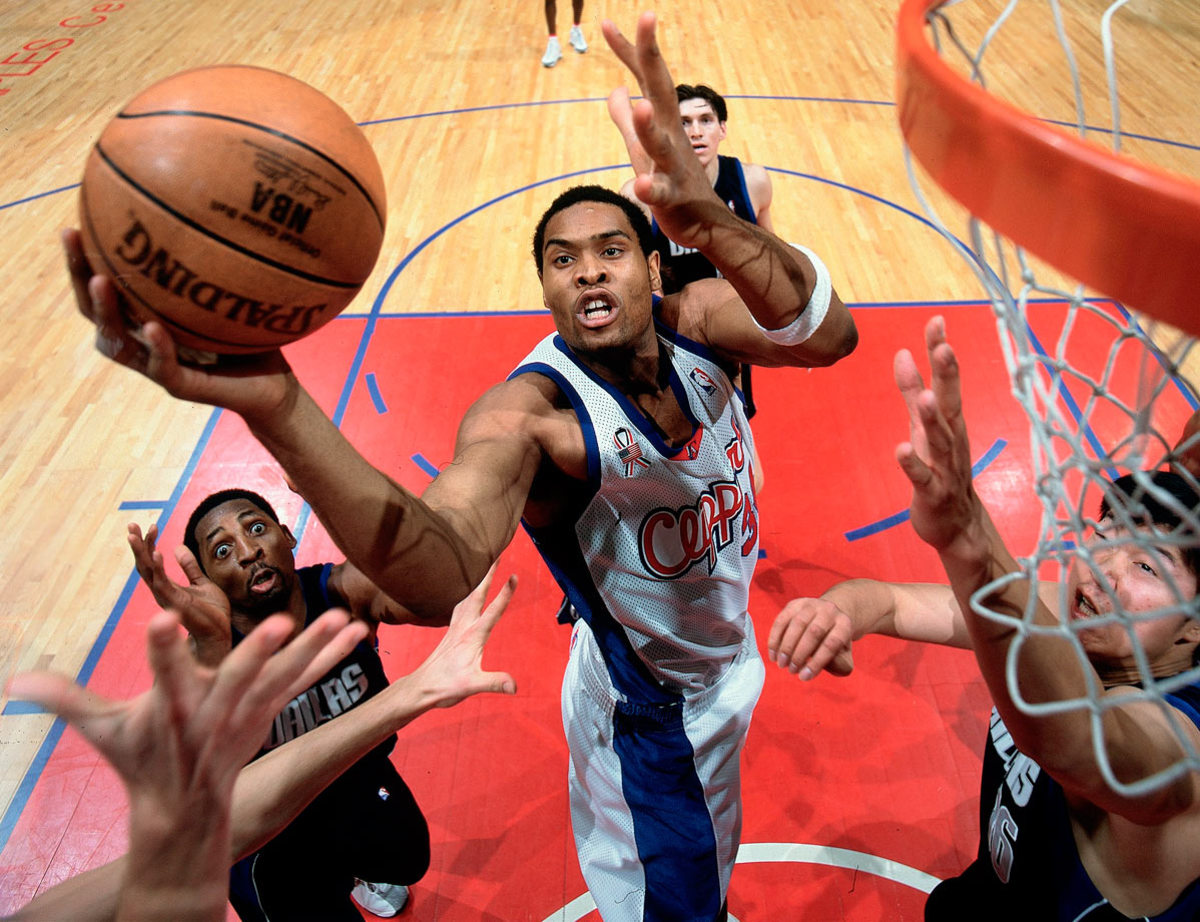
Bust-worthy on so many levels. The Kandi Man was taken before future All-Stars Antawn Jamison, Vince Carter, Dirk Nowitzki and Paul Pierce and a host of more suitable selections. Even the final pick of the first round, Nazr Mohammed, has had a much more distinguished career in the pivot.
Robert Traylor, Bucks (via Mavs) | No. 6 pick, 1998
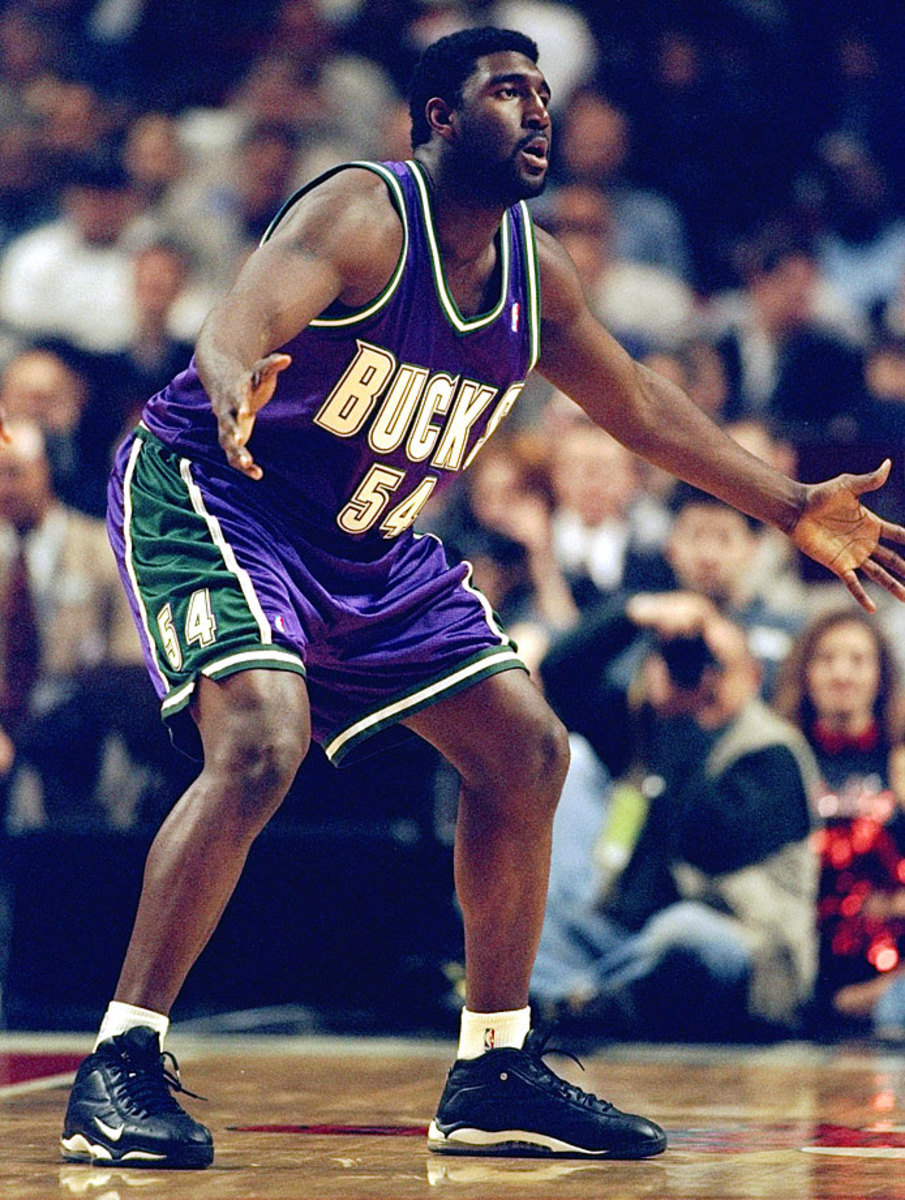
In a prearranged draft-night trade that turned into one of the most lopsided deals in history, the Mavericks sent Traylor to the Bucks for Dirk Nowitzki and Pat Garrity, whom Dallas dealt to Phoenix for Steve Nash. Nowitzki was named MVP in 2007 and led the Mavs to the 2011 title with an epic postseason performance. Meanwhile, the Tractor averaged 4.8 points and 3.7 rebounds in seven seasons.
Joe Smith, Warriors | No. 1 pick, 1995
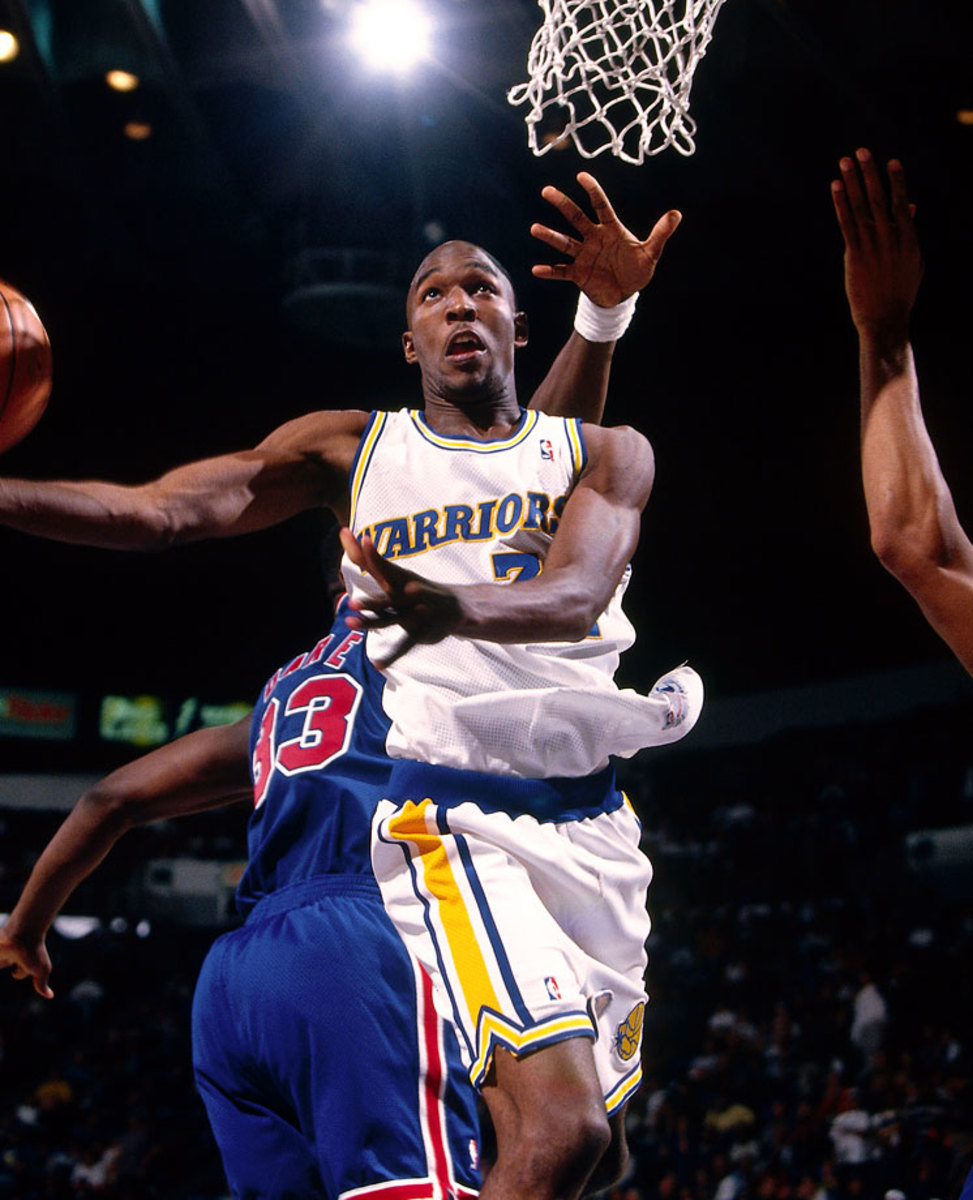
Average in name and game, Smith was serviceable while playing for 12 teams over 16 years, but later selections Antonio McDyess, Jerry Stackhouse, Rasheed Wallace and (especially) Kevin Garnett enjoyed better careers.
Ed O'Bannon, Nets | No. 9 pick, 1995
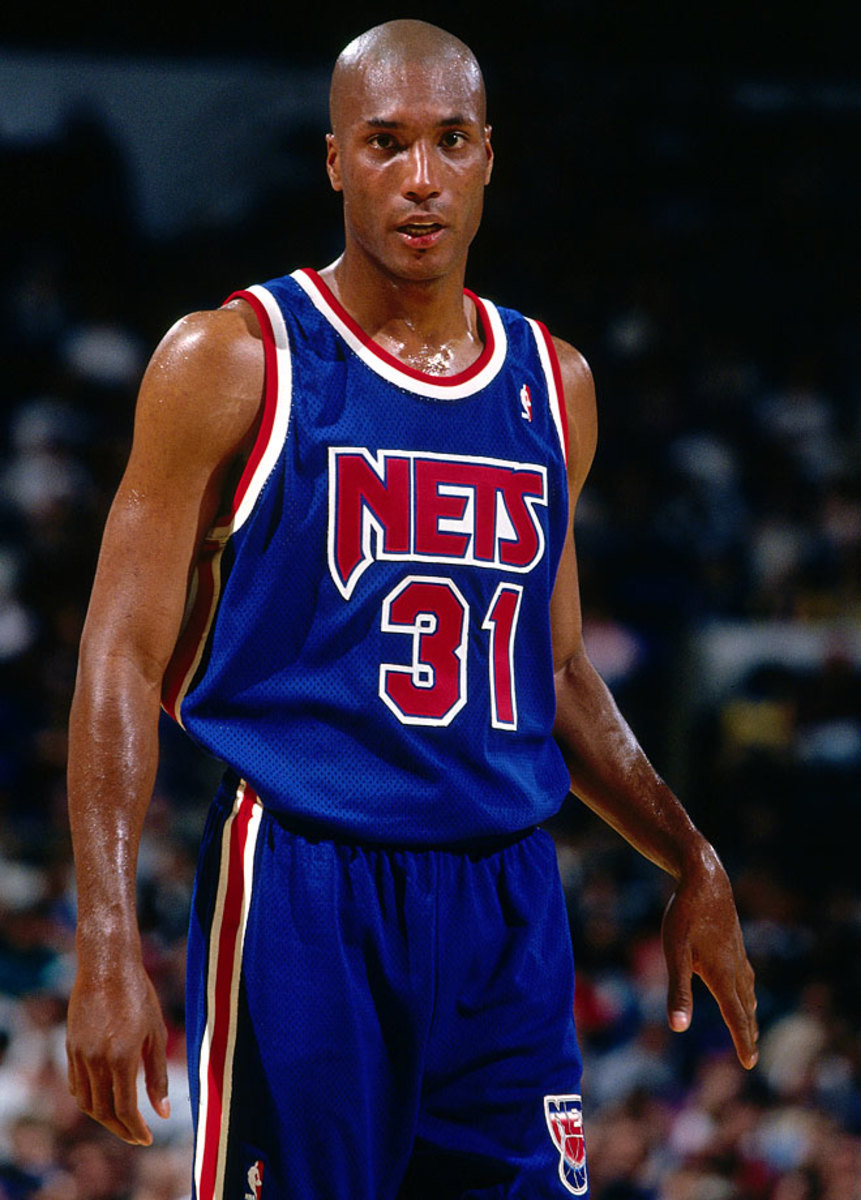
The older and better of the brothers who led UCLA to an NCAA championship in 1995, O'Bannon is the perfect example of a player who had multiple talents but none that rose to an NBA level. He lasted only two seasons, playing with the Nets and Mavericks.
Shawn Bradley, 76ers | No. 2 pick, 1993
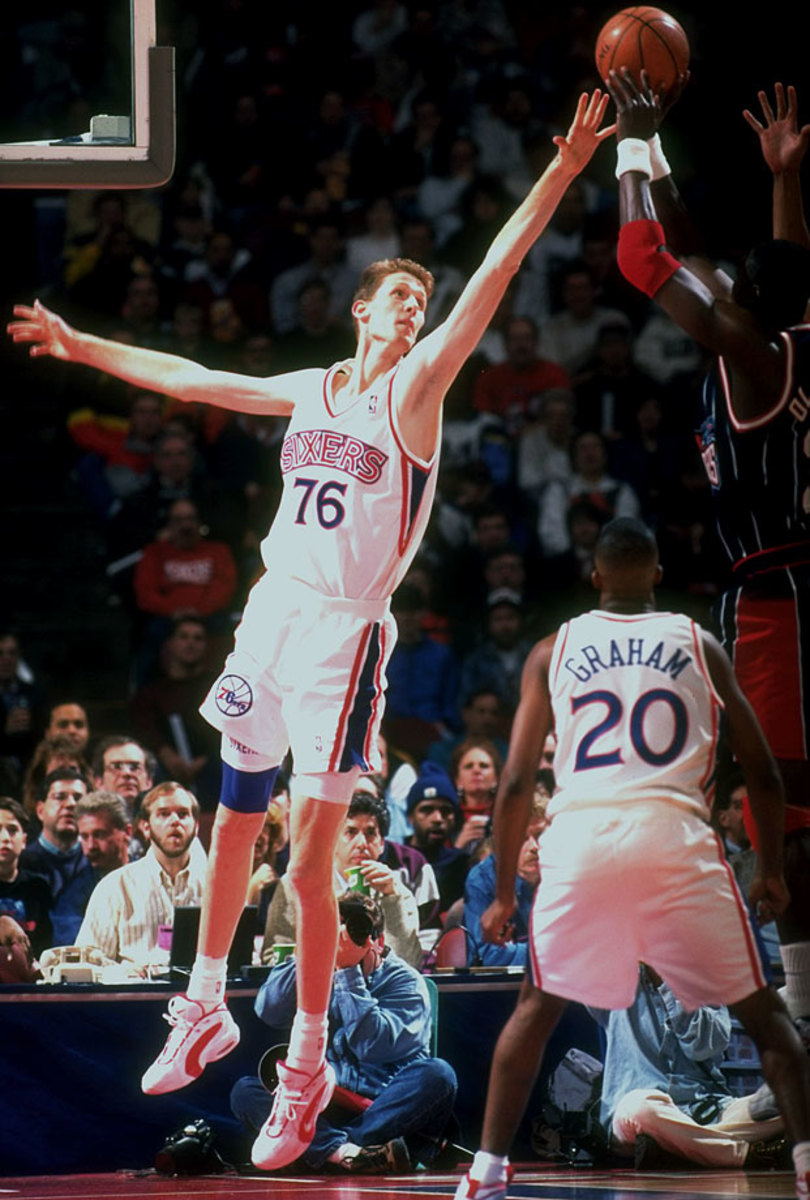
Find him on a poster near you. To his credit, Bradley developed into a so-so big man who ranks 14th on the all-time list in blocks. He's the perfect example of a player whose draft position colors the perception of his career.
Bo Kimble, Clippers | No. 8 pick, 1990
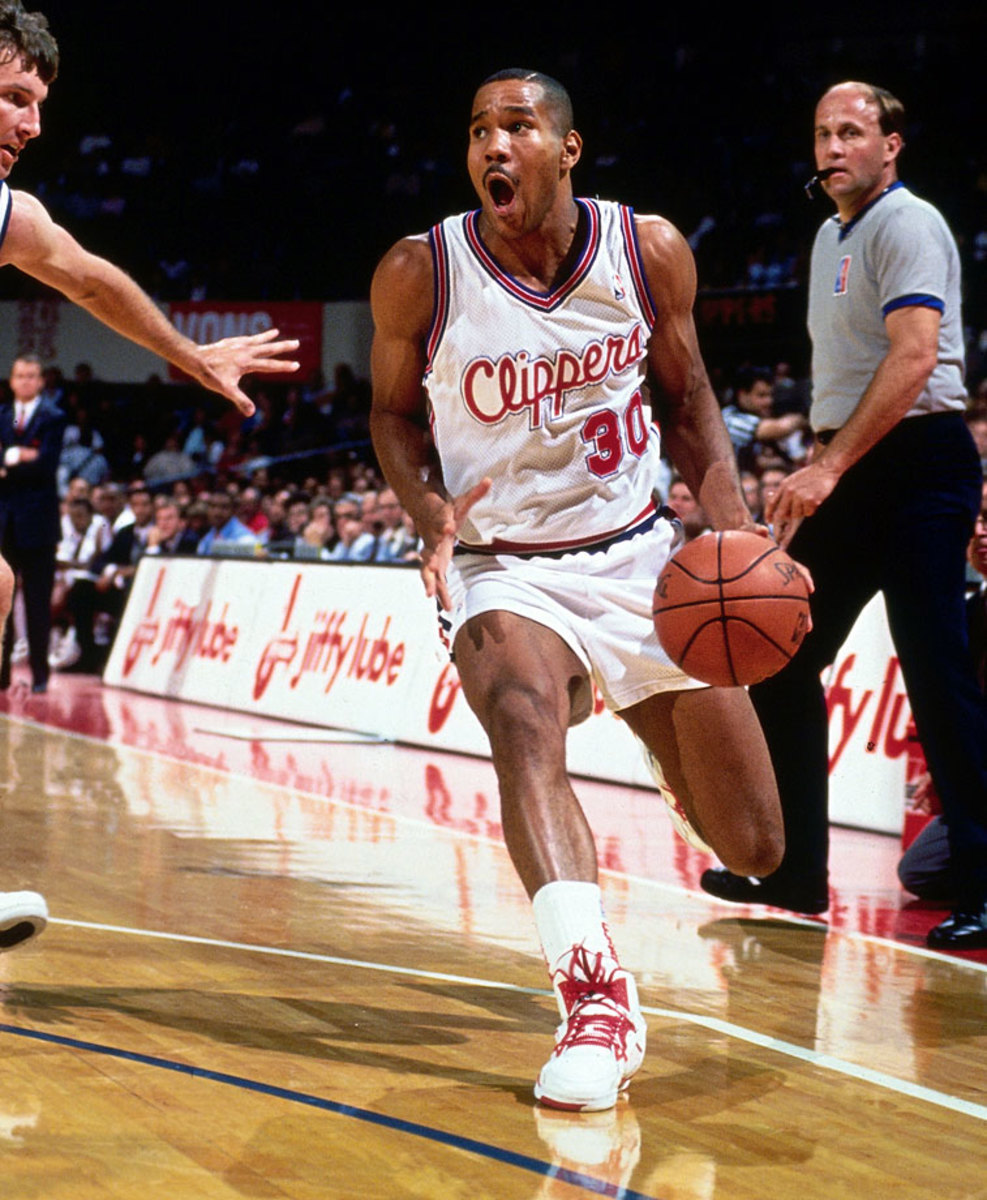
A high-scoring, high-profile college star at Loyola Marymount, Kimble was out of the league after 105 NBA games split between the Clippers and Knicks.
Danny Ferry, Clippers | No. 2 pick, 1989
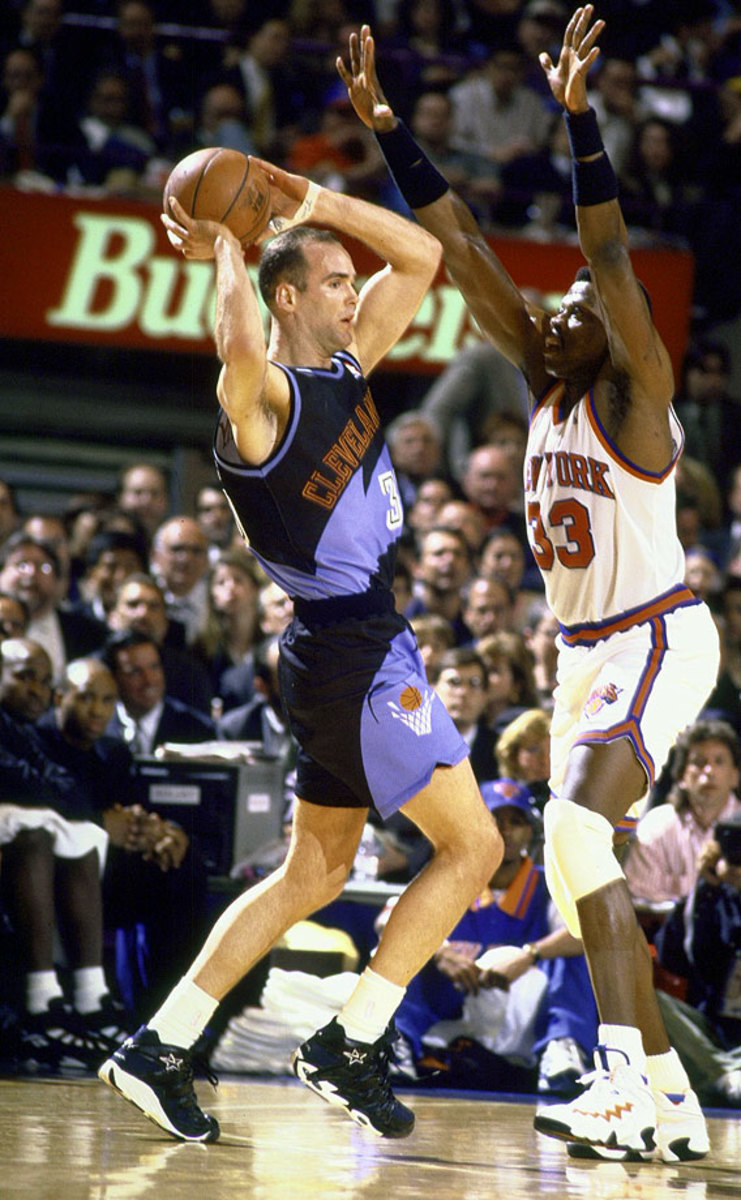
Ferry had no interest in playing for the Clippers so he toiled for a season in Italy before Los Angeles agreed to trade his rights. Well-respected Cavs GM Wayne Embry made one of the worst moves of his career by sending scoring machine Ron Harper to the Clippers for Ferry, who spent 10 nondescript seasons in Cleveland. (Incidentally, the player taken before Ferry, Pervis Ellison, makes many "bust" lists, though he did have a couple of strong seasons before injuries wrecked his career.)
Dennis Hopson, Nets | No. 3 pick, 1987
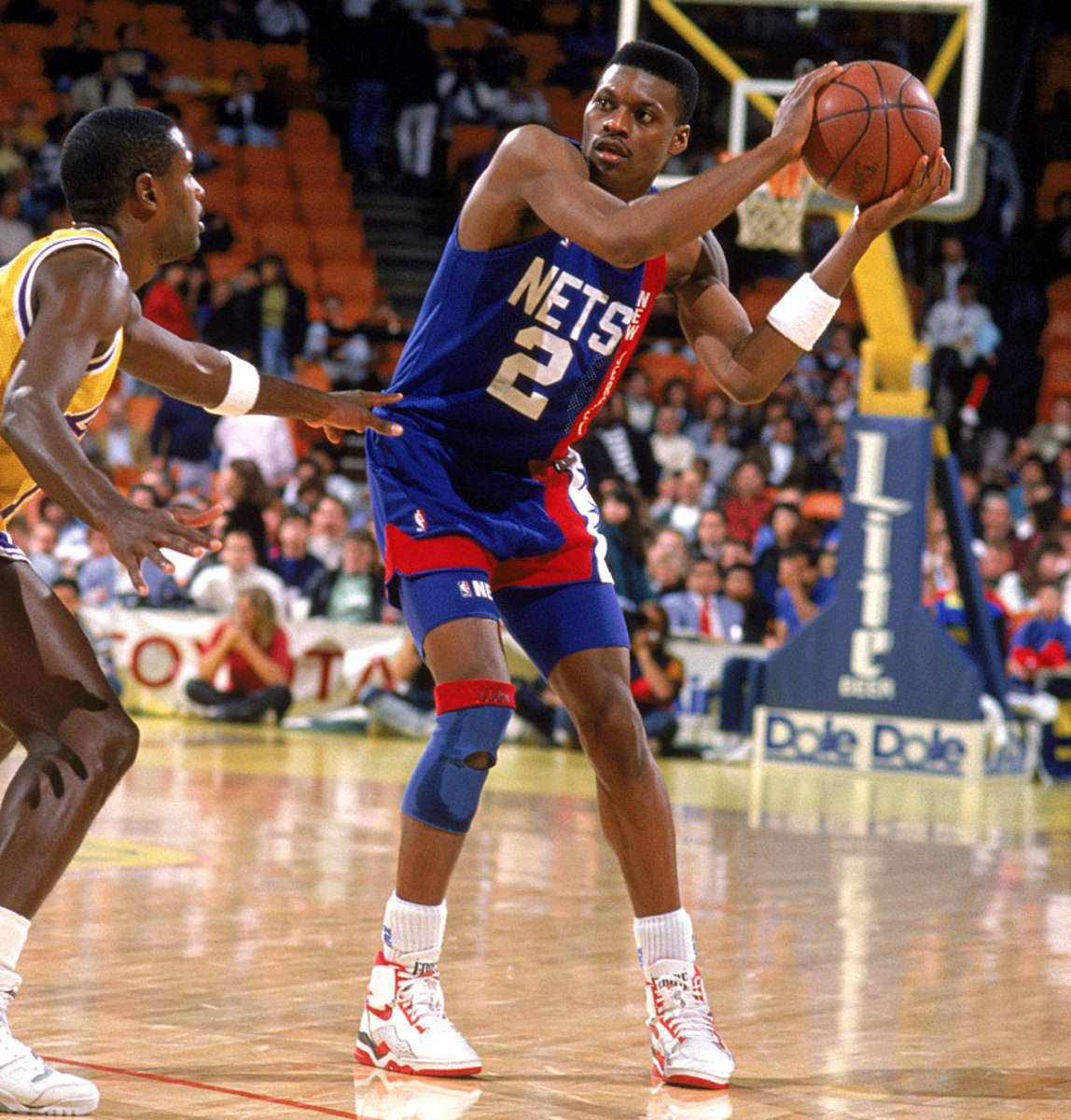
The first in a series of "Next Jordans" flamed out before producing a fraction of what MJ accomplished. Hopson averaged 10.9 points in five seasons.
Chris Washburn, Warriors | No. 3 pick, 1986
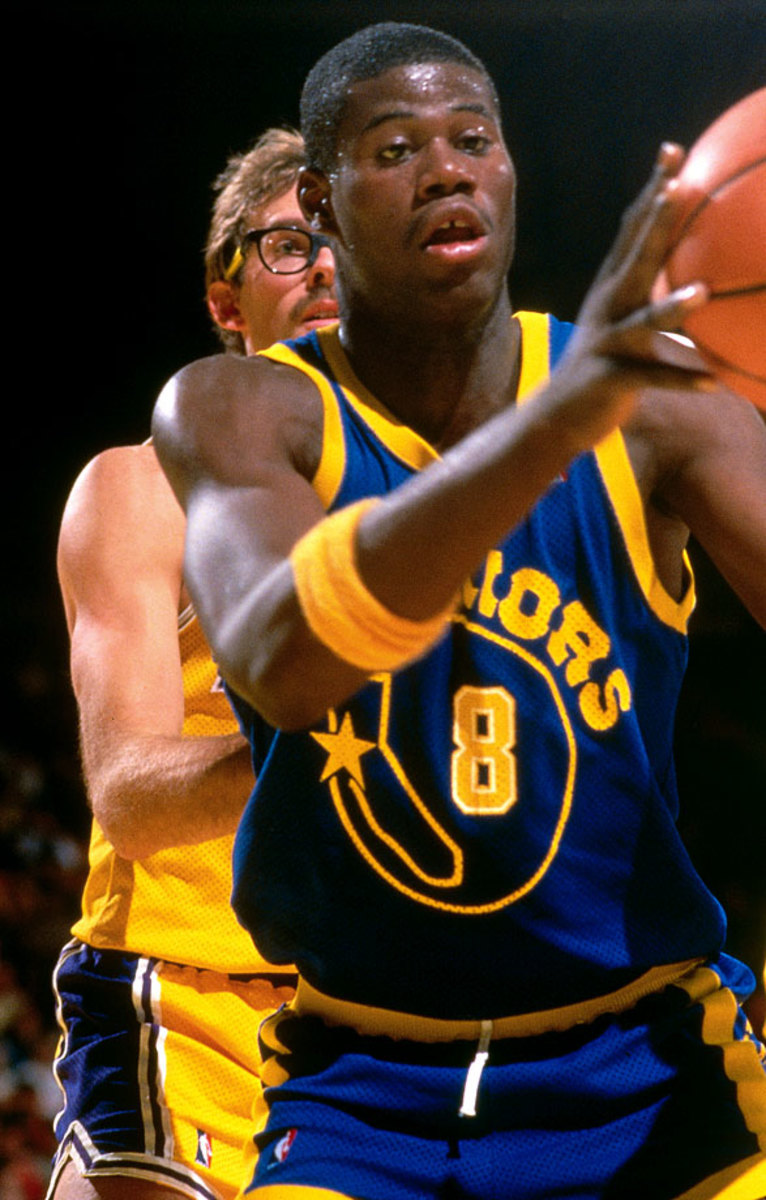
The North Carolina State product totaled 222 points in 72 career games, as good a representative as any for a draft full of busts.
Jon Koncak, Hawks | No. 5 pick and Joe Kleine, Kings | No. 6 pick, 1985
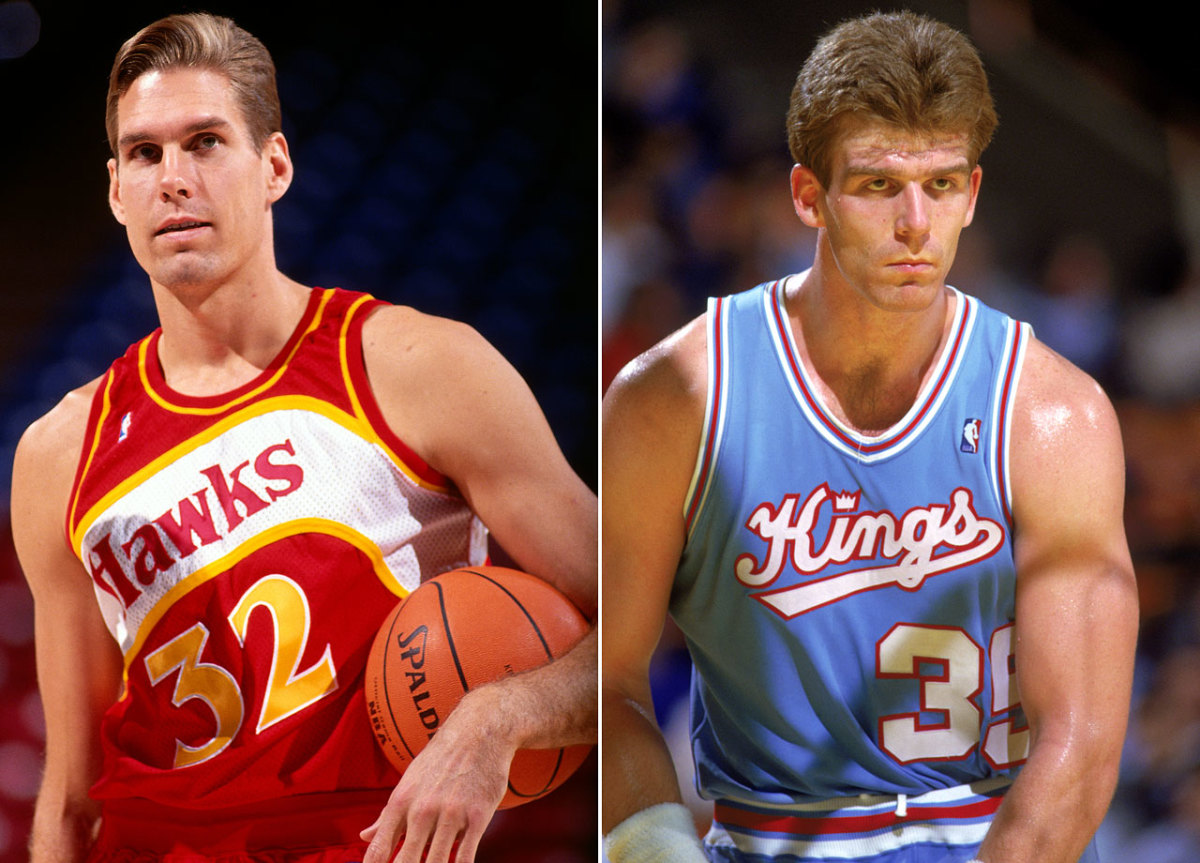
Koncak and Klein spent the bulk of their time in the NBA cashing in on their right to commit six fouls per game.
Sam Bowie, Trail Blazers | No. 2 pick, 1984
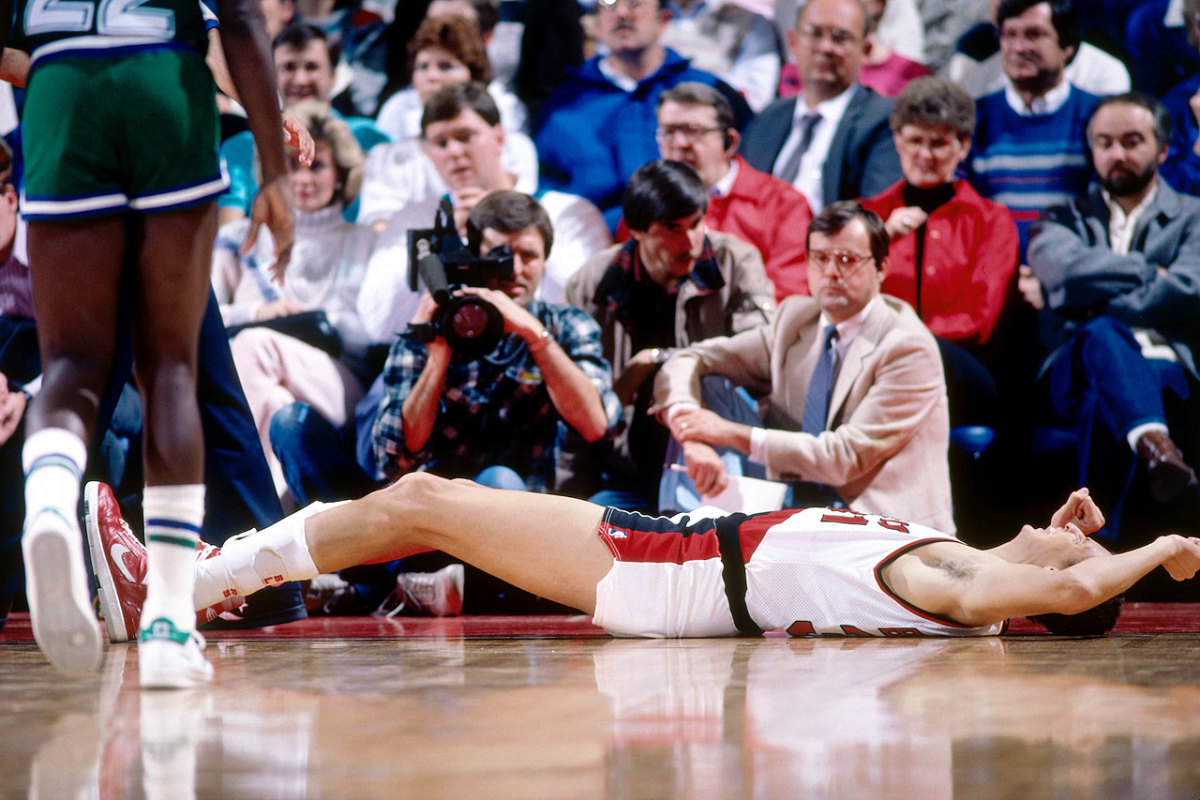
His selection underscores the cardinal rule behind NBA Draftology: You can't draft for need. The Blazers, flush with Jim Paxson and Clyde Drexler on the wings, needed a center and passed on drafting Michael Jordan, Charles Barkley and John Stockton. Bowie struggled with injuries throughout his 10-year run and finished with career averages of 10.9 points and 7.5 rebounds.
Bill Garnett, Mavericks | No. 4 pick, 1982
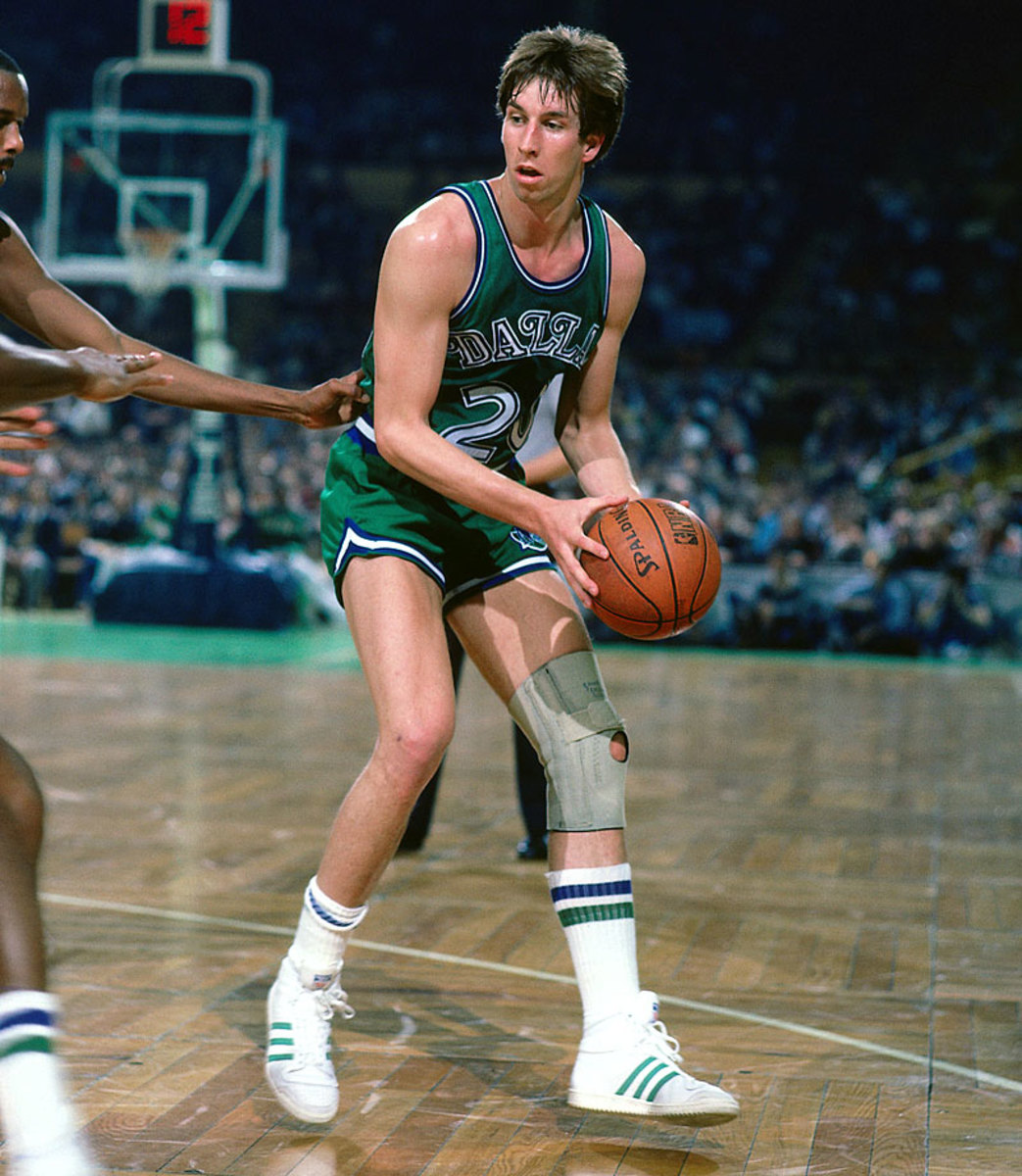
The former Wyoming star split four pedestrian seasons (5.5 points, 4.3 rebounds) between Dallas and Indiana.
Kent Benson, Bucks | No. 1 pick, 1977
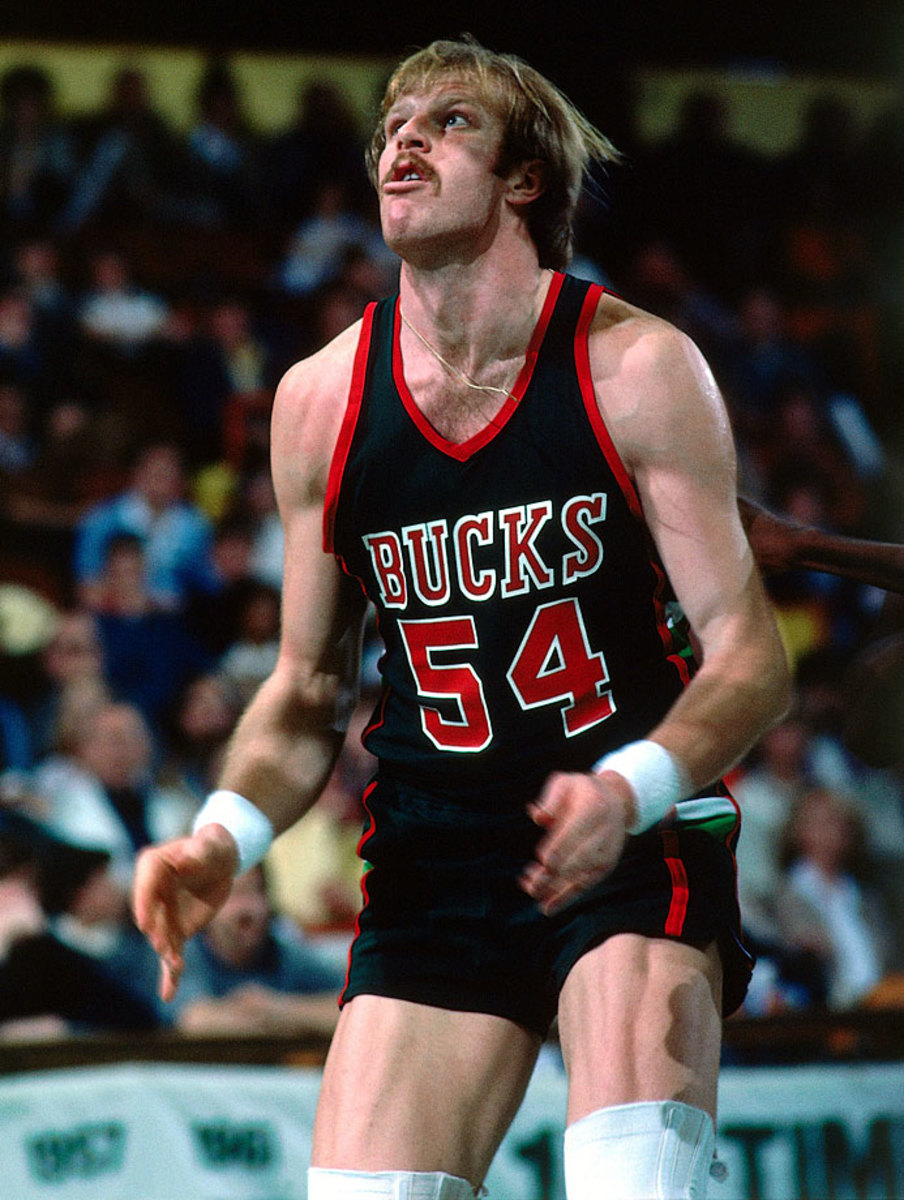
It never got better for Benson than winning the national title at Indiana. He did stick in the NBA for 10 seasons but produced only three double-digit scoring campaigns.
LaRue Martin, Trail Blazers | No. 1 pick, 1972
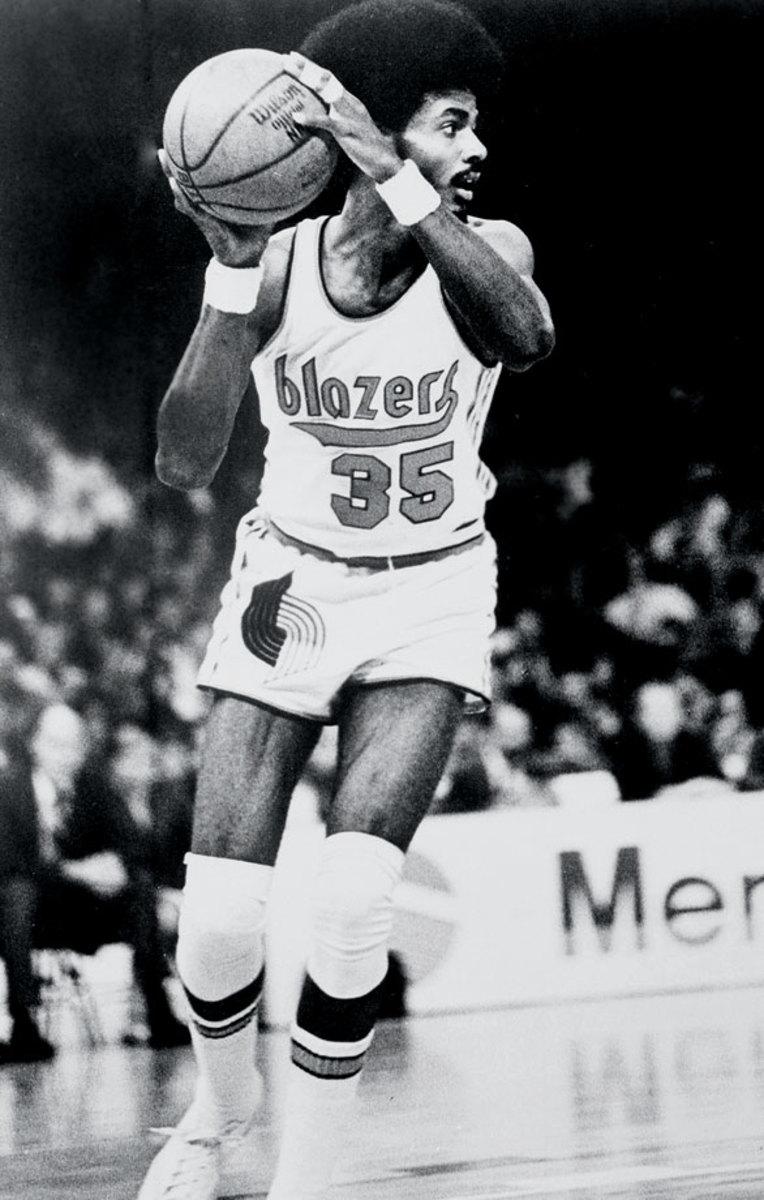
Portland passed on future Hall of Famer Bob McAdoo to take fellow big man Martin, who never averaged more than seven points in his four NBA seasons. The Loyola product retired in 1976, a year before the Blazers won their first and only championship.
Ken Durrett, Cincinnati Royals | No. 4 pick, 1971
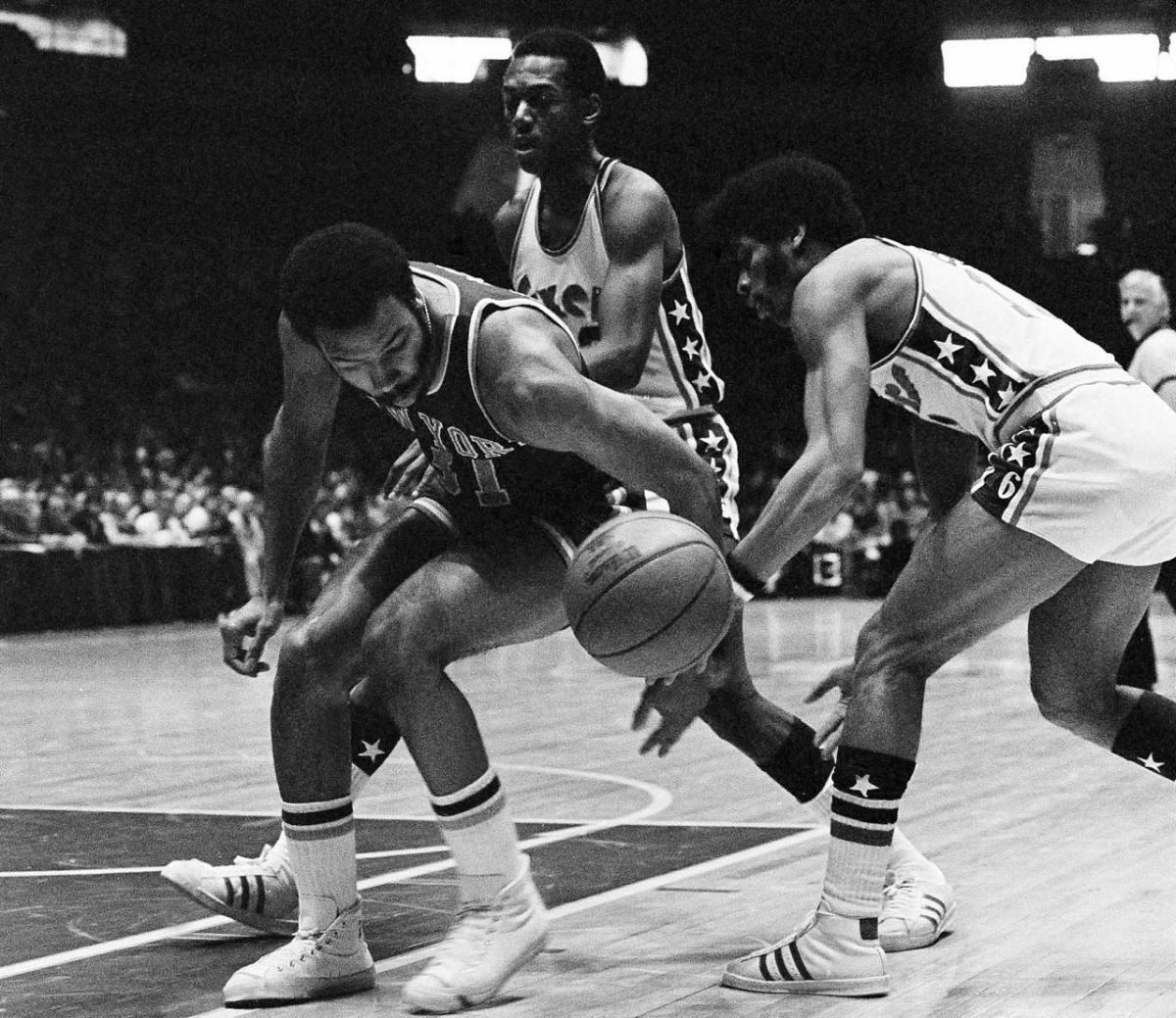
Durrett (pictured in the background, with the 76ers)) had more fouls (197) than field goals (192) in his four-year career, during which he averaged 10 minutes a game and never started.
